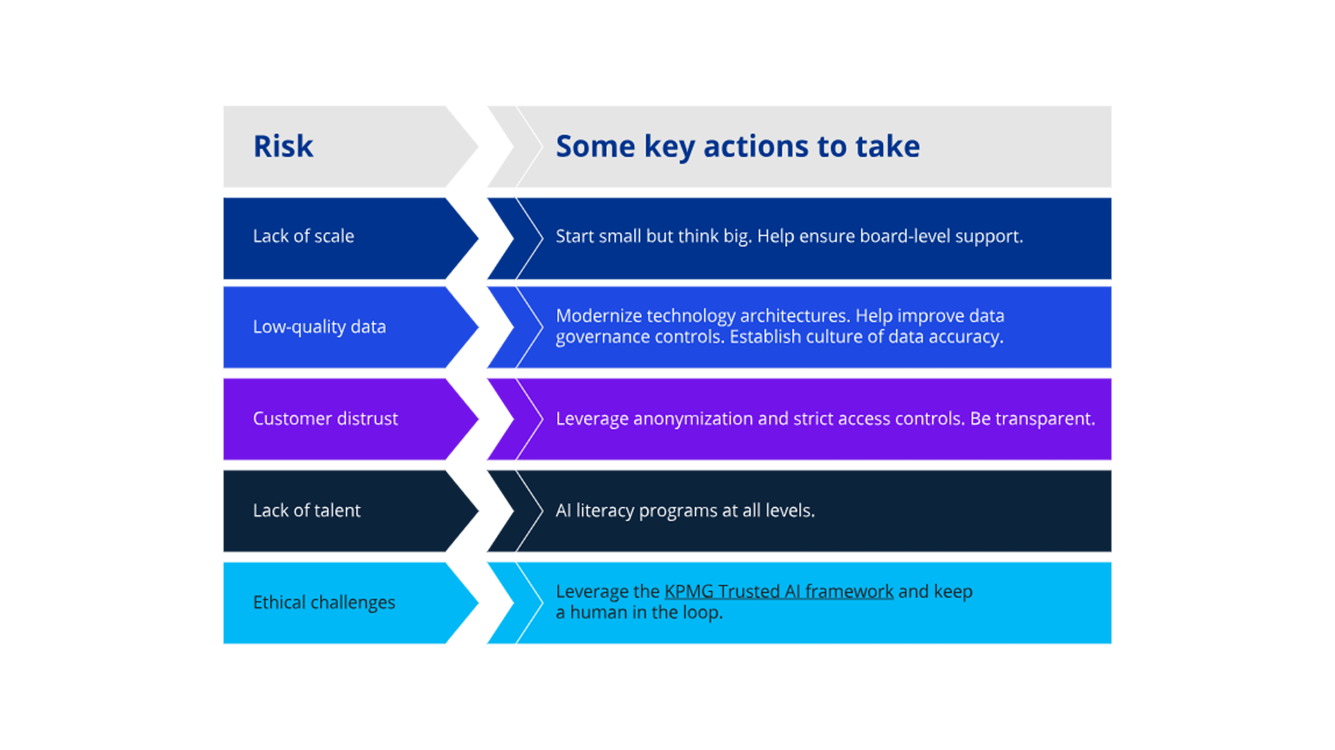How utilities can leverage AI
There are compelling instances where power and utilities can embrace intelligence and automation technologies, with a few utilities now scaling up projects and integrating them across entire organizations. This move holds immense potential for enhancing their benefits. These experiences show that their peers can consider the following specific applications:
- Investment decision making: Electric utilities can use AI to support their investment decision-making process. Generation and grid network assets have high costs and are likely to be in use for decades. The transition to renewables can make industrial batteries and other energy storage options more attractive, but business cases require robust predictions. Organizations can use AI for options analysis, scenario planning and modeling, helping to save them money and improve their planning in areas including regulatory work, assets, working with their ecosystem of suppliers and grid connections.
- Customer information and relationship management: UK-based Octopus Energy Group has developed a cloudbased digital platform called Kraken that applies intelligence and automation to customer information and relationship management. As well as supporting its own growth, Octopus has licensed it to other utilities in the UK and elsewhere and is also collaborating on developing wind energy. Octopus, which KPMG in the UK has advised on all of its capital raising in addition to several international acquisitions, uses the Kraken platform in generation as well as supply, making it an example of a utility that is using such technologies across the organization.
- Regulatory workload management: Utilities can use generative AI to manage regulatory workloads, including assisting with rate cases, the process through which US companies apply to state public utility commissions for rate increases to fund improvements. Rate cases can involve analyzing regulatory documents, sometimes totaling 10,000+ pages, which generative AI can summarize and provide footnotes. Getting humans to add a degree of structure, such as feeding the material to the AI system in chunks, can help it to avoid mistakes. Using a generative AI system that produces references can also allow for human checking.
- Validating schematics: Utilities are exploring the automated review of grid connection schematics, technical drawings submitted by developers of new buildings. At present, these can require extensive and time-consuming checks by the utility’s engineers, including the correction of basic errors. Generative AI could potentially be used to analyze symbols and images that could provide an automated first line of support. This analysis could spot potential errors and could accelerate the process. Engineers could then focus on other issues. This process could work as a shared service across the industry to help cover its costs.
- Enhance travel for field service engineers: Utilities can also look to enhance travel by field service engineers, using automation to help reduce the time spent driving between jobs known as ‘windshield time’. Doing this can potentially make the company more efficient, but there are opportunities to go further by linking the system to other sources of information. Using weather forecasts could help field service engineers avoid adverse conditions, coordinating with maintenance plans could help them visit when it is easiest to do their work, and data on specific components could be used to get these components checked when they are worn but yet to fail. It could also be used to schedule training on new components automatically before engineers encounter them for the first time.5
Utilities are also using AI for auditing and managing assets, remote monitoring of sites, including automated analysis of camera output, running digital simulations of the impacts of flooding and managing relationships with contract electricians. However, many projects are small-scale proofs of concept run by technology departments, which often end without plans to develop them.
How to help mitigate risks, build trust, and scale AI responsibly
The issue of scale is perhaps the most significant challenge for intelligence and automation technologies. Utilities tend to work at large scales, so technology projects should work at a similar size to make a significant difference. We believe the simple answer is for utilities to start small but think big, with plans to evaluate proofs of concept then putting successful ones into large-scale production, a top-down approach that will usually need board-level support. However, doing this means tackling other issues that can hamper such projects.
Utilities should seek to modernize technology architectures to help ensure their data is reliable and of high quality and can be accessed in real time. Many have developed these architectures incrementally, resulting in fragmented data sets trapped within departmental systems. These should be joined up through modular, scalable architectures that allow AI systems to access information across the organization.
In our view, utilities need better data to run effective digital projects. This can be achieved with better data governance controls, with projects to improve the quality and accessibility of older data, and by explaining why this matters, so that staff across the organization realize that keeping accurate data is important rather than an impediment to their jobs. Some utilities that have invested in technology over recent years, such as enterprise resource planning or human resources systems, are likely to find these provide good quality data that can be used with AI.
Customers worry about their personal data and what utilities will do with it, arguably in ways that many do not apply to smartphones and other personal technology. Utilities can help address this by being open about their uses of personal data and by applying techniques such as anonymization and strict access controls that can strengthen privacy while allowing data to be used effectively. This can be part of more general work to help improve relationships and trust with customers, who in some countries get treated as an afterthought rather than an organization’s focus.







